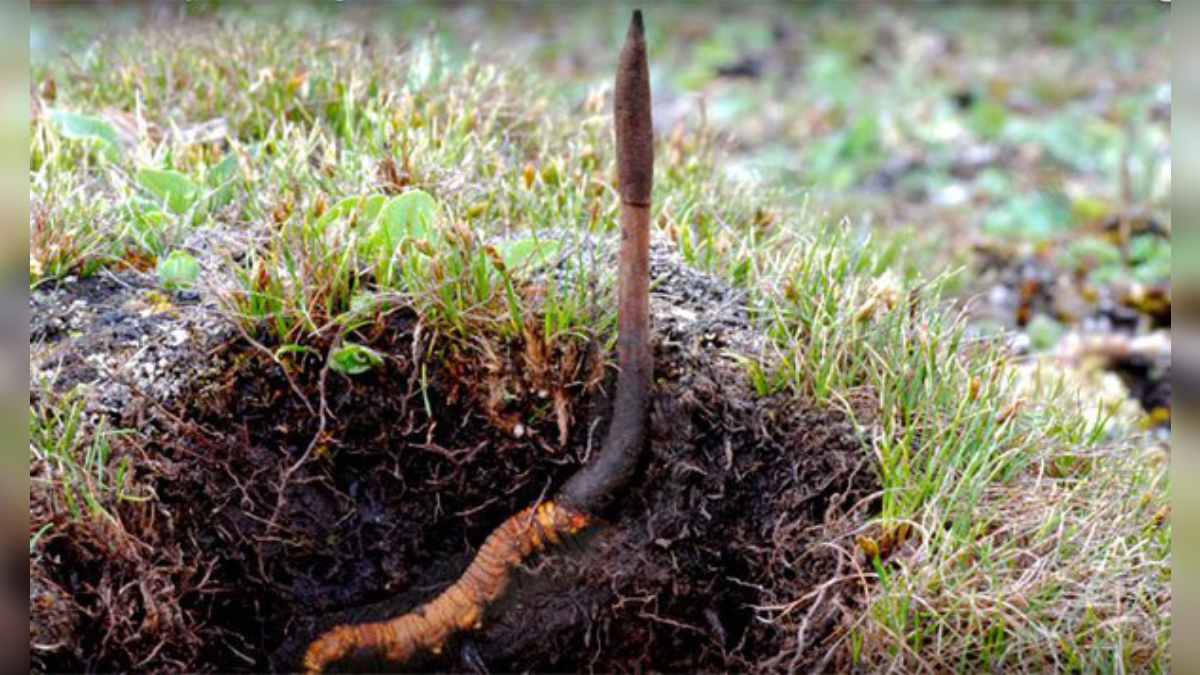New Delhi: Nestled high in the Himalayas, a remarkable herb known as ‘Keeda Jadi’ is gaining global attention for its extraordinary healing properties. Also referred to as caterpillar fungus, this unique herb finds its origins in the head of a ghost moth larva. While its name may seem peculiar, the potential benefits it offers are nothing short of miraculous.
A natural elixir
‘Keeda Jadi’ is believed to possess incredible medicinal value. It is commonly consumed as tea, soup, or stew after boiling in water. This herb is thought to be a potent remedy for a wide range of ailments, including impotence, liver diseases, and even cancer. Beyond its curative properties, it is celebrated for providing an added boost of energy and vitality.
The quest for ‘Keeda Jadi’
This exceptional herb thrives in mountainous regions, specifically in Bhutan, India, China, and Nepal. It prefers altitudes ranging from 3,300 meters to 4,500 meters, where the snow gradually melts to reveal its hidden treasures.
The caterpillar connection
The lifecycle of ‘Keeda Jadi’ is intertwined with caterpillars, particularly those vulnerable to infection by Ophiocordyceps sinensis. These caterpillars reside approximately 15 cm underground in alpine grasslands across the Tibetan Plateau and the Himalayas. The fungus’s habitat spans regions in Nepal, Bhutan, northern India, Yunnan, Qinghai, Tibet, Sichuan, and Gansu provinces.
View this post on Instagram
The magical transformation
The fungus undergoes a fascinating transformation. A dark brown to black stalk-like fruiting body emerges from the deceased caterpillar’s head, breaking through the alpine soil in early spring. During late summer, this structure disperses spores. Notably, the caterpillars are most susceptible to fungal infection after shedding their skin in late summer.
Nature’s strategy
Once inside a host larva, the fungus proliferates, ultimately leading to the caterpillar’s demise. The infected larvae tend to remain underground, vertically aligned with their heads up. Fungal sclerotia, multihyphal structures that can lay dormant and later produce spores, form and cause rigidity in the host larvae. After surviving the winter, the fungus ruptures the host body, forming the fruiting body – a sexual sporulating structure connected to the sclerotia below ground. This structure grows upward, emerging from the soil to complete its life cycle.
Climate concerns
The growth of Ophiocordyceps sinensis is notably slow and thrives at temperatures below 21°C. Temperature requirements and growth rates are critical factors distinguishing this fungus from others. Climate change is now a concern, potentially impacting this mountain organism and the delicate balance it embodies.



